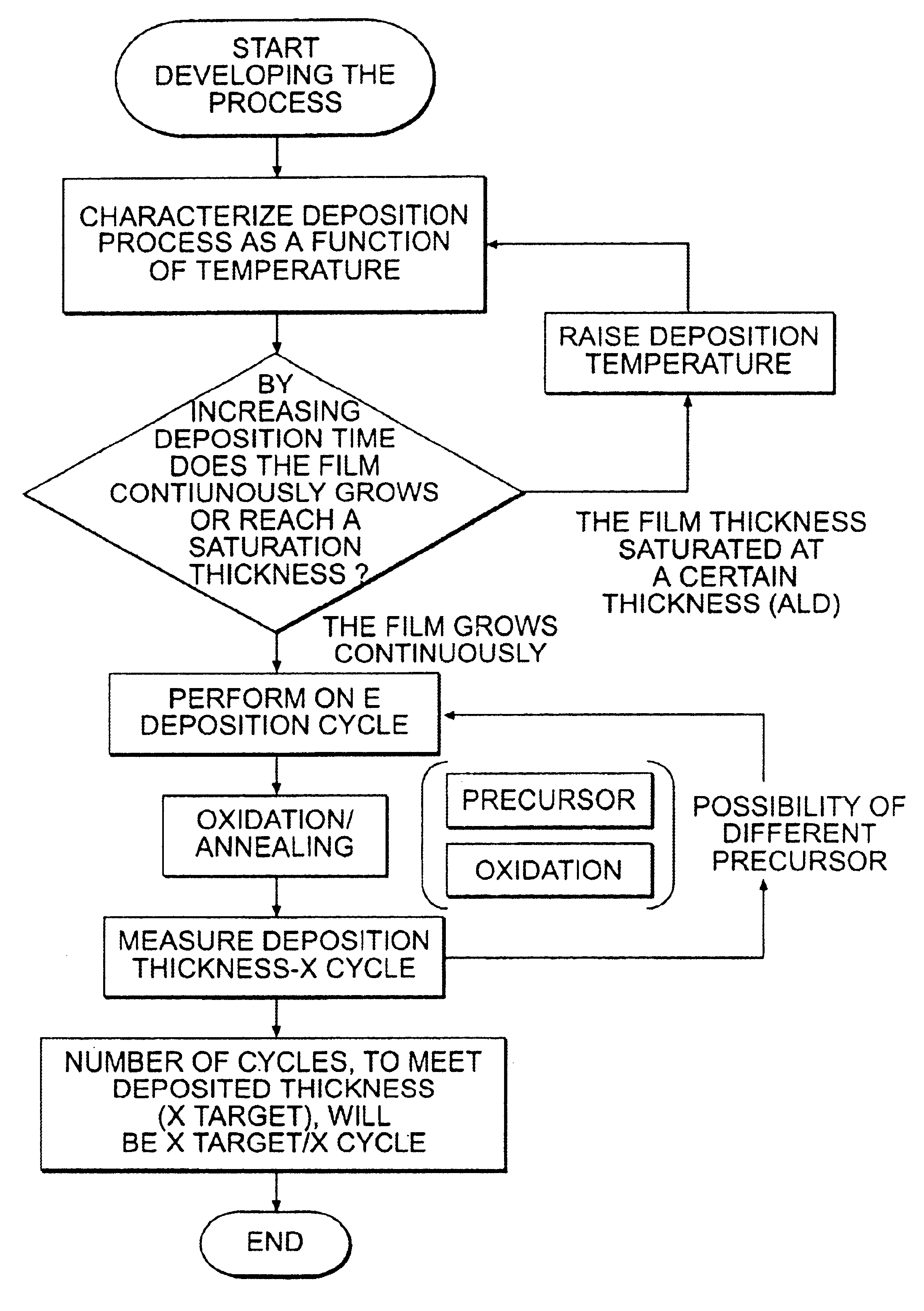Method for depositing a coating having a relatively high dielectric constant onto a substrate
a technology of dielectric constant and substrate, which is applied in the direction of chemical vapor deposition coating, solid-state diffusion coating, coating, etc., can solve the problems of limiting the performance of the resulting electronic device, adversely degrading with the overall performance of the electrical device, and a wide range of properties
- Summary
- Abstract
- Description
- Claims
- Application Information
AI Technical Summary
Problems solved by technology
Method used
Image
Examples
Embodiment Construction
[0037]It is to be understood by one of ordinary skill in the art that the present discussion is a description of exemplary embodiments only, and is not intended as limiting the broader aspects of the present invention, which broader aspects are embodied in the exemplary construction.
[0038]The present invention is generally directed to a method of depositing a coating having a relatively high dielectric constant “k” onto a substrate. For instance, the dielectric constant of the coating formed according to the present invention is typically greater than about 4, in some embodiments greater than about 8, in some embodiments greater than about 10, and in some embodiments, greater than about 15. For instance, coatings formed according to the present invention might have a dielectric constant between about 5 to about 100, and in some embodiments, between about 15 to about 20. Further, the resulting high-k coating can generally have a thickness less than about 30 nanometers. For instance, ...
PUM
| Property | Measurement | Unit |
|---|---|---|
| deposition temperature | aaaaa | aaaaa |
| deposition temperature | aaaaa | aaaaa |
| temperature | aaaaa | aaaaa |
Abstract
Description
Claims
Application Information
 Login to View More
Login to View More - R&D
- Intellectual Property
- Life Sciences
- Materials
- Tech Scout
- Unparalleled Data Quality
- Higher Quality Content
- 60% Fewer Hallucinations
Browse by: Latest US Patents, China's latest patents, Technical Efficacy Thesaurus, Application Domain, Technology Topic, Popular Technical Reports.
© 2025 PatSnap. All rights reserved.Legal|Privacy policy|Modern Slavery Act Transparency Statement|Sitemap|About US| Contact US: help@patsnap.com



